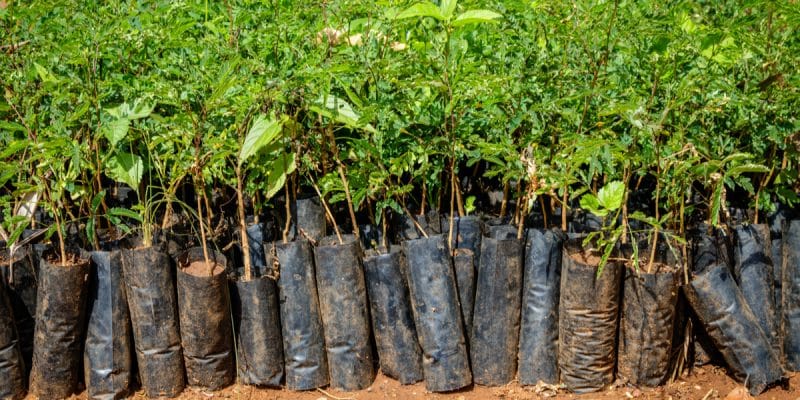The government supports the local reforestation initiative, undertaken by the Nakasongola authorities. In the district, located in the central region, deforestation has consumed 80% of the vegetation cover, subjecting people to severe drought.
In Nakasongola, a 3738 km2 district located at an altitude of 1160 metres in central Uganda, farming is becoming increasingly difficult due to the drought. Since December 2018, no raindrops have fallen in some parts of the locality (Lwampanga, Lwabyata, Nabiswera and Kalungi sub-counties). The soils are arid and agricultural activity is not very profitable.
For the experts, it is the people themselves who are at the root of this situation. According to them, the artisanal production of charcoal for cooking and other domestic needs has reduced the vegetation cover by 80% in nearly 20 years.
It is therefore in this context that the “Nakasongola go green” operation was launched on May 6, 2019. It is a reforestation campaign to avoid a drought wave in the district. “We believe that this campaign will enable us to address the problem of drought,” said Sam Kigula, Nakasongola district chief. As part of this campaign, people must plant fruit trees, develop the cultivation of honey bees and avoid cutting down trees to make charcoal. For cooking, people are called upon to use improved stoves, which consume less wood.
Another alternative to firewood exists in Uganda. Launched in 2019 in cooperation with the German government, this project uses corn stalks as biomass to produce briquettes for heating. The aim is to curb deforestation and improve energy efficiency.
The government allocates 200,000 plants for “Nakasongola Go Green”
The Ugandan government, which has made reforestation one of its main environmental activities, could not remain indifferent to the commitment of the Nakasongola district. Tom ObongOkello, Executive Director of the National Forestry Authority (NFA), attended the reforestation campaign launch ceremony and donated 200,000 indigenous tree seedlings worth about 14,242 euros, or 60 million Ugandan shillings. “We must participate in the tree-planting campaign to save our environment. The drought situation is critical in the country, as several other districts are in the same situation as Nakasongola.
Tom ObongOkello, Executive Director of the National Forestry Authority (NFA), attended the reforestation campaign launch ceremony and donated 200,000 indigenous tree seedlings worth about 14,242 euros, or 60 million Ugandan shillings. “We must participate in the tree-planting campaign to save our environment. The drought situation is critical in the country, as several other districts are in the same situation as Nakasongola. These are Kabale, Masaka, Rakai, Kyotera, and the sub-regions of Bunyoro and Tooro,” said Tom ObongOkello.
Overall, Uganda has lost about 4.9 million hectares of forest cover, equivalent to 19,000 m2 over the past 30 years. That is why the government has embarked on a national reforestation plan. Its vision for 2040 is to restore the country’s forest cover from 15% in 2010 to 24% by 2040.
The government is announcing, for the coming days, the launch of a green school programme targeting students as tree planting ambassadors to stimulate the restoration of forest cover. “Uganda has about 10 million children in school, including about 8.6 million in the primary section. Many children, including their parents, are the main users of wood for everyday domestic tasks, including cooking. It is therefore important for the government to rely on these children to carry out its environmental protection program,” explained NFA’s Executive Director.
Boris Ngounou







